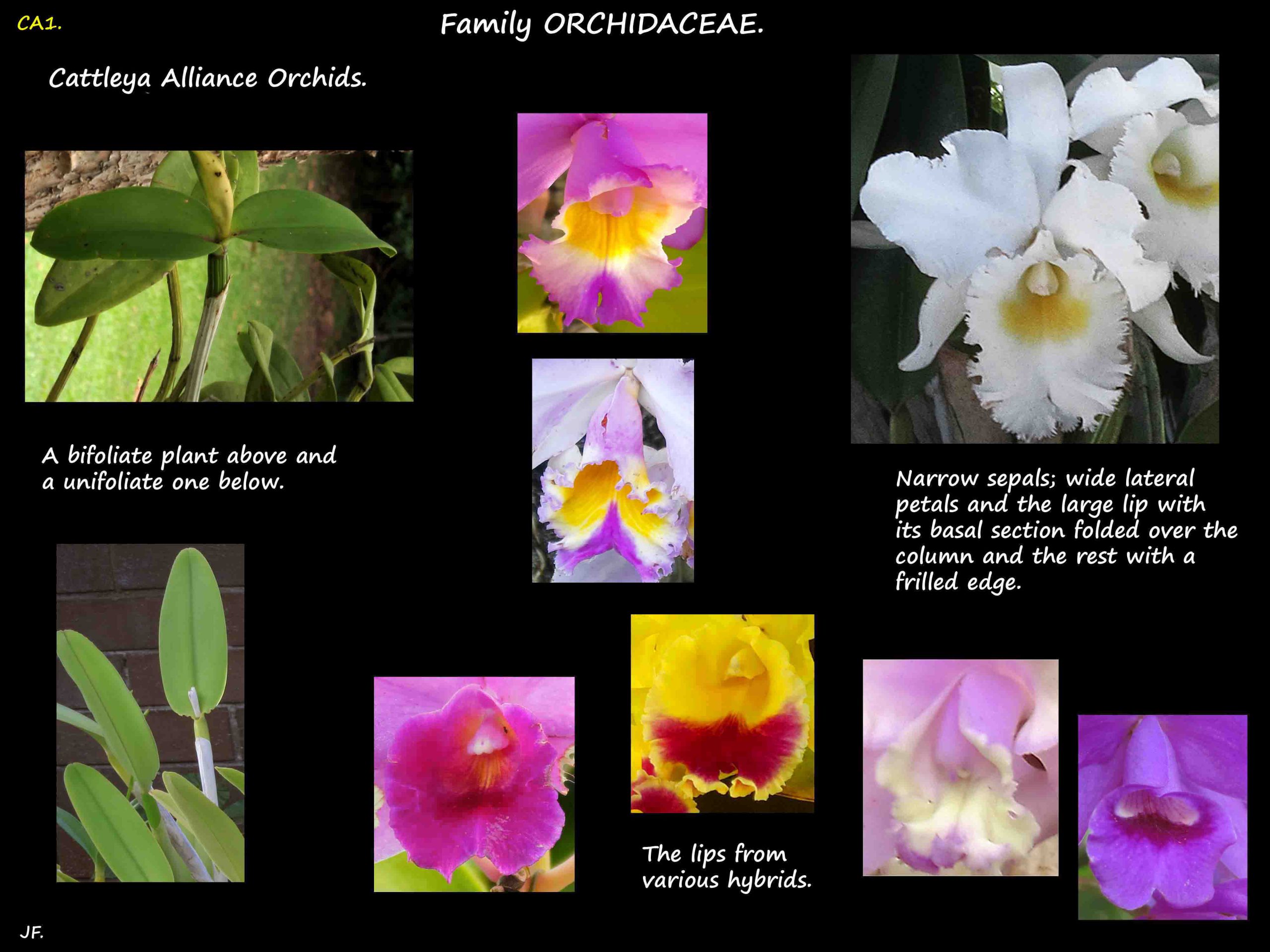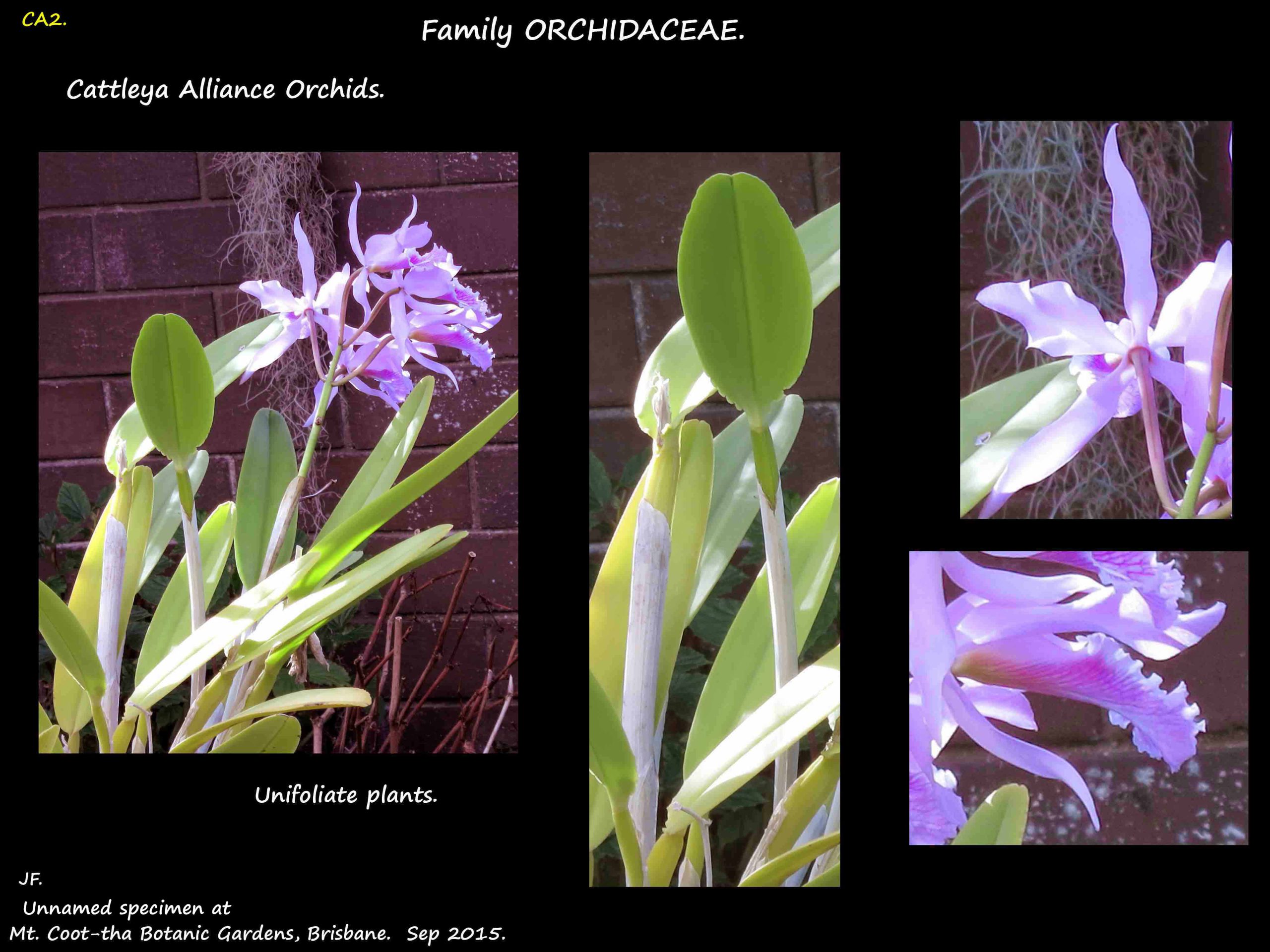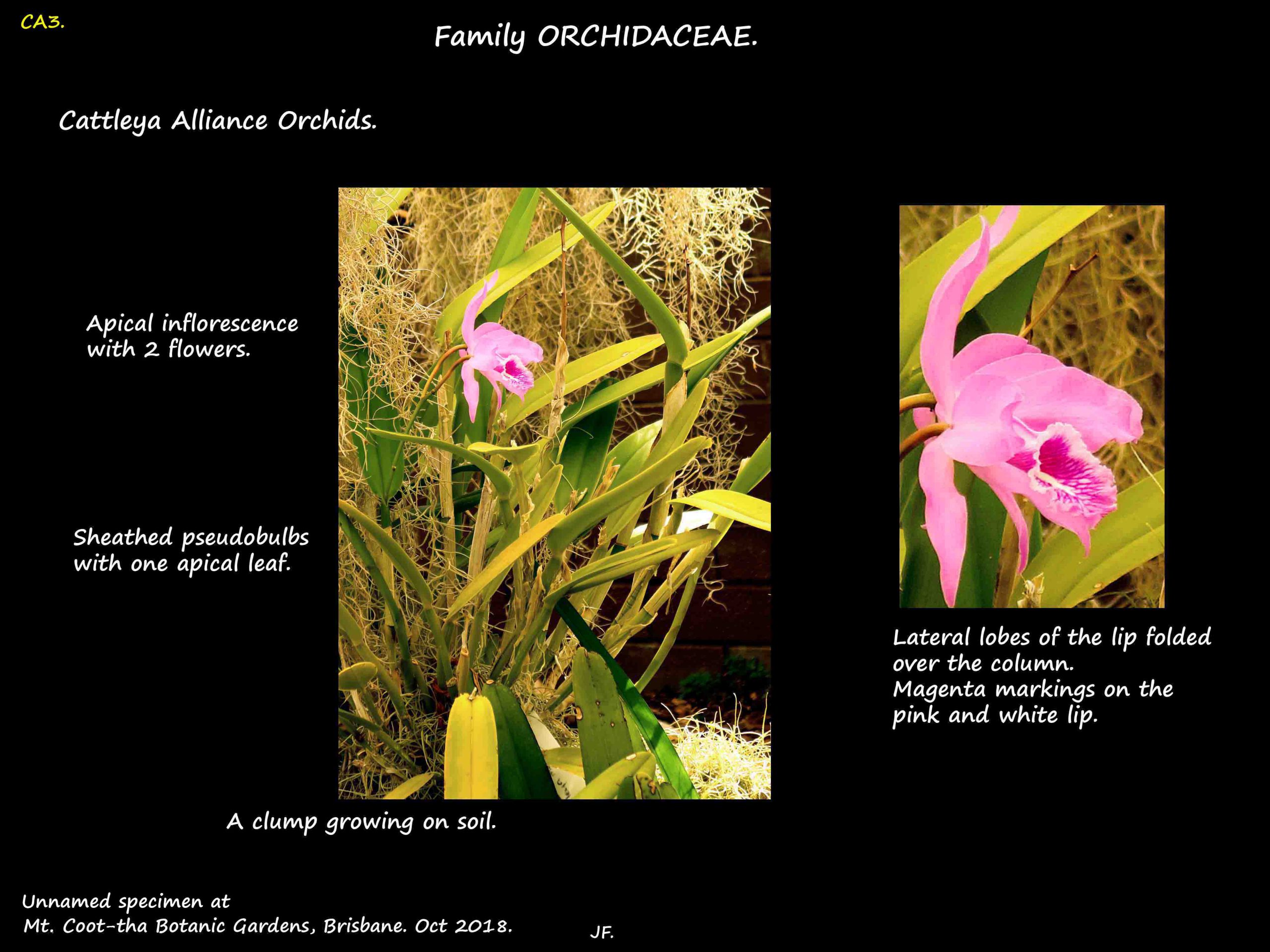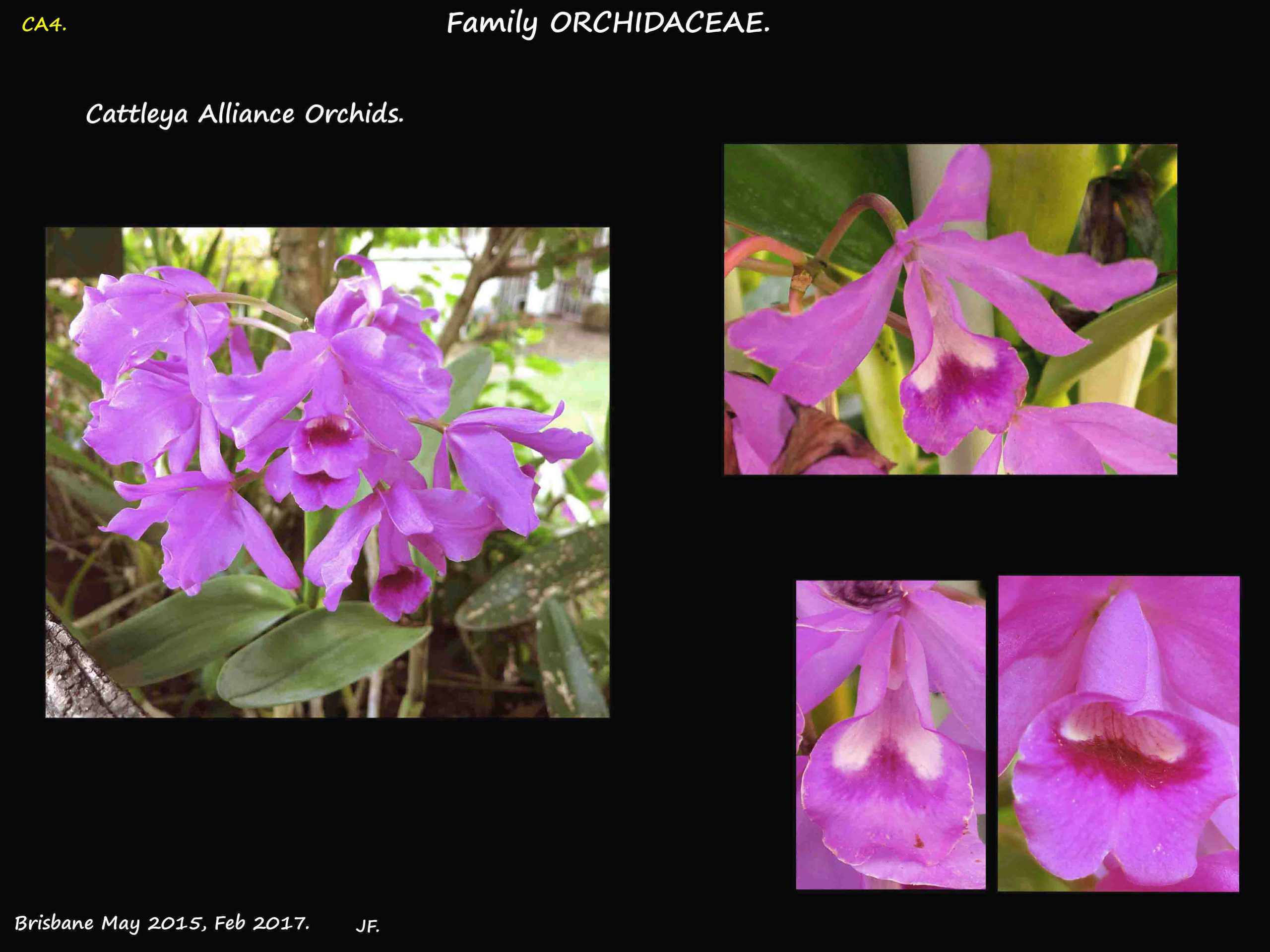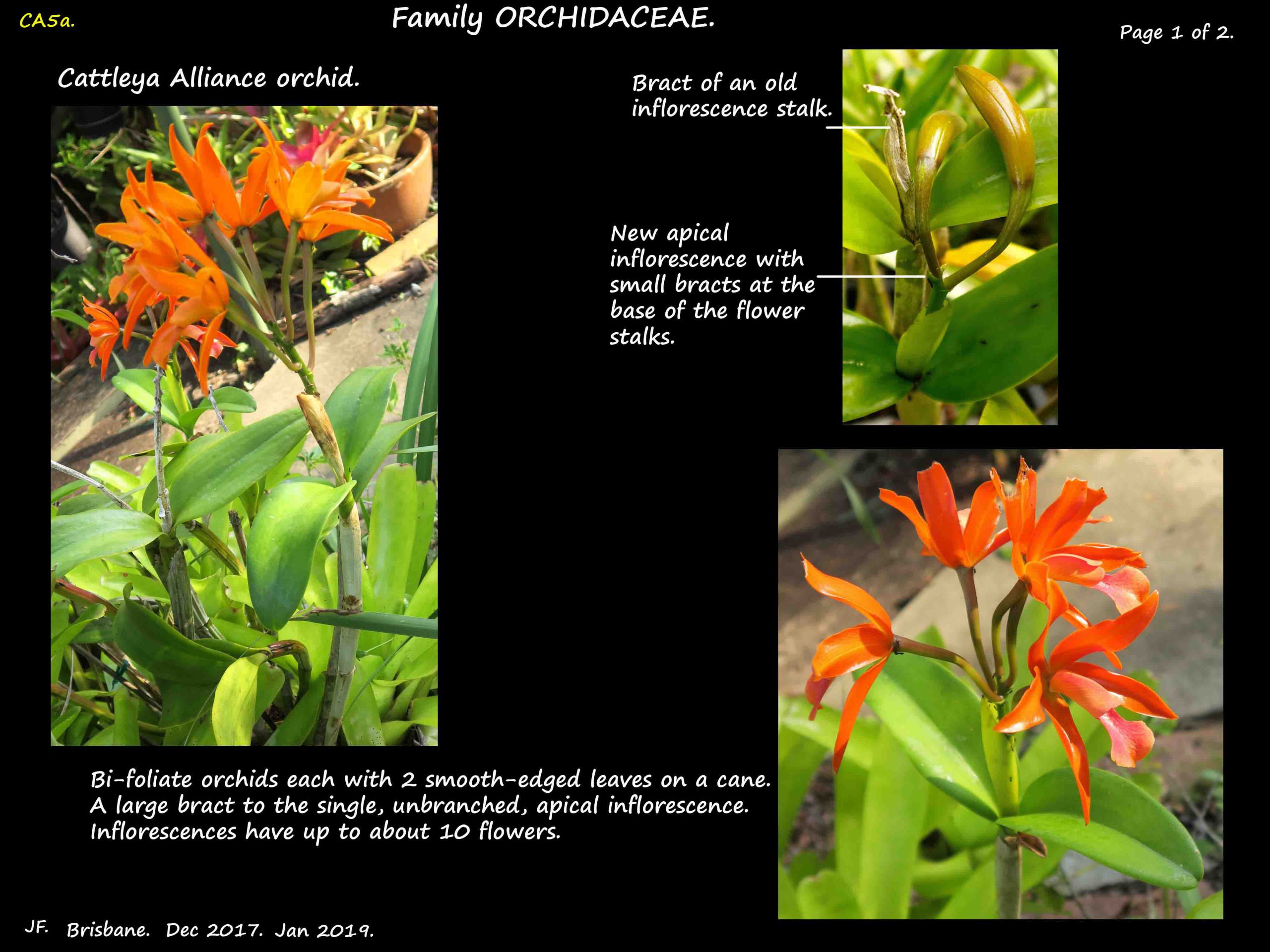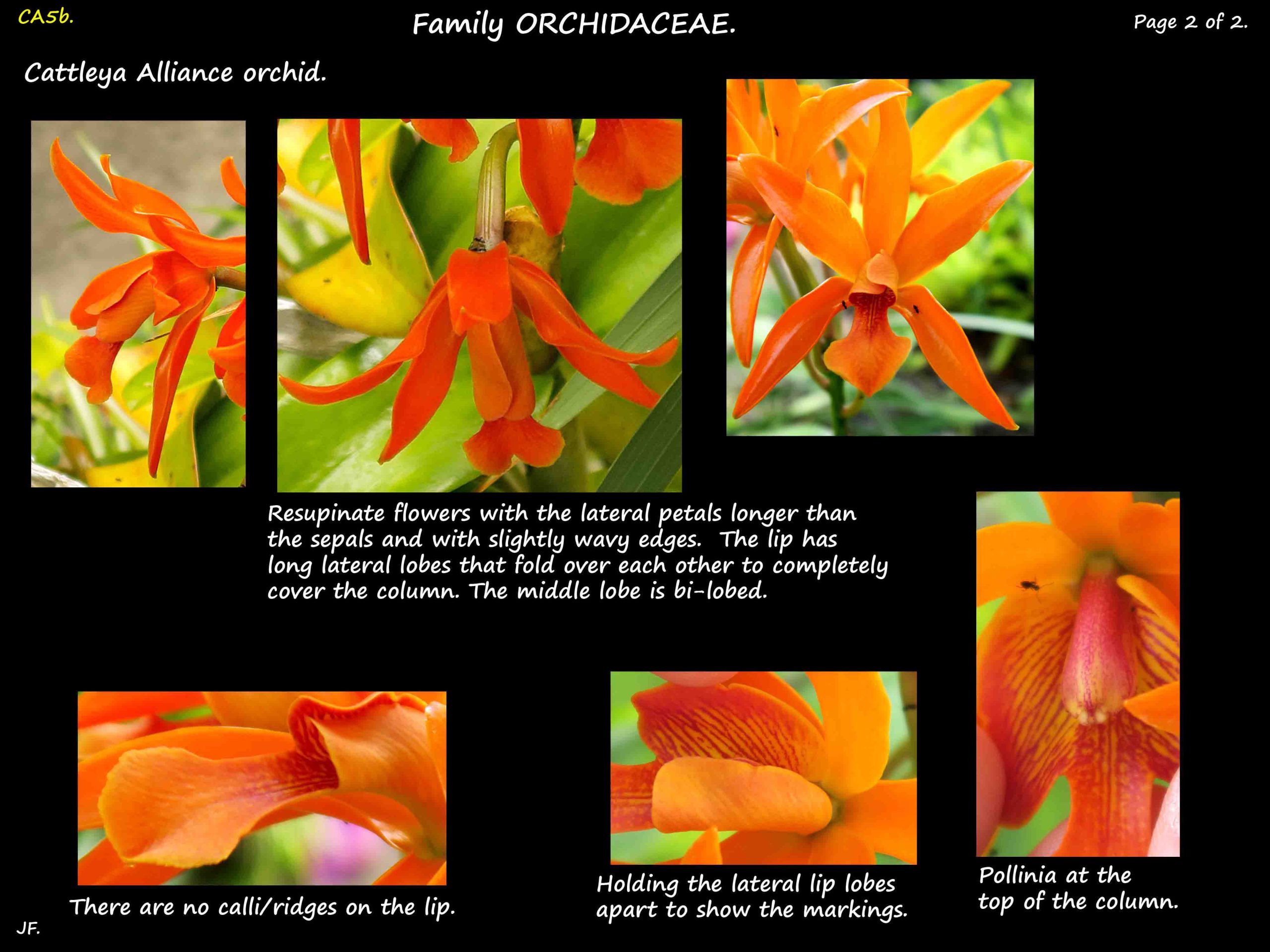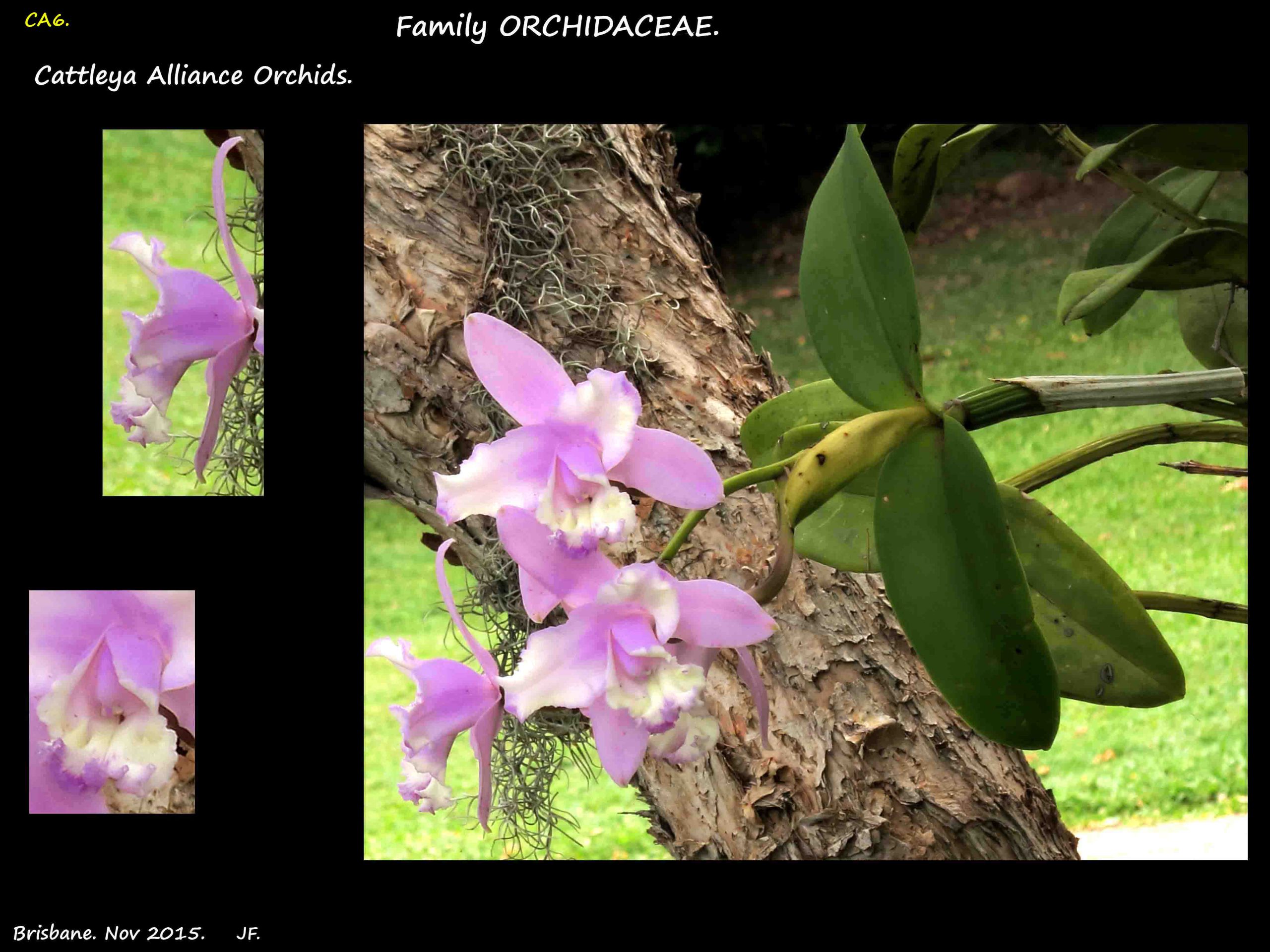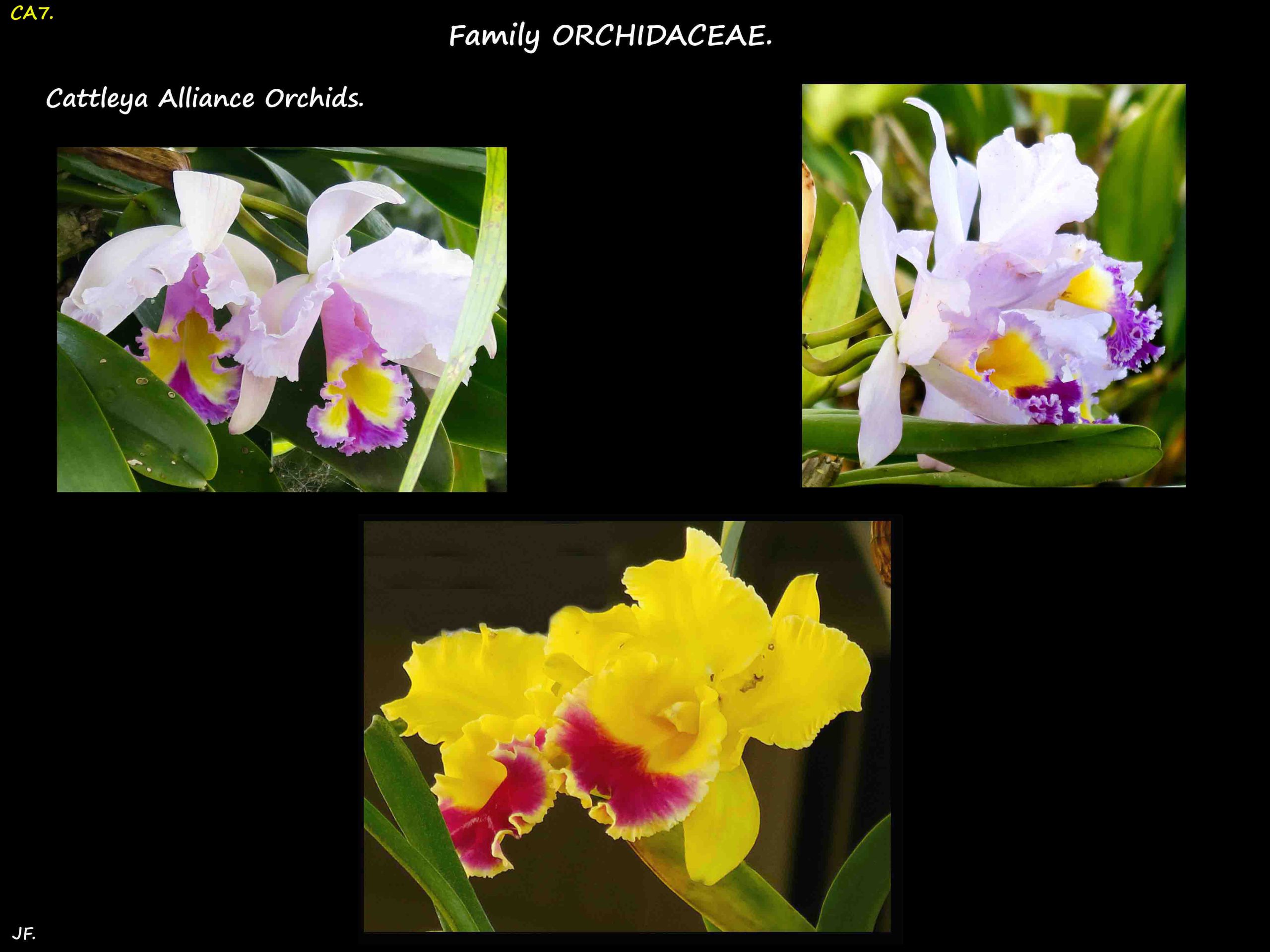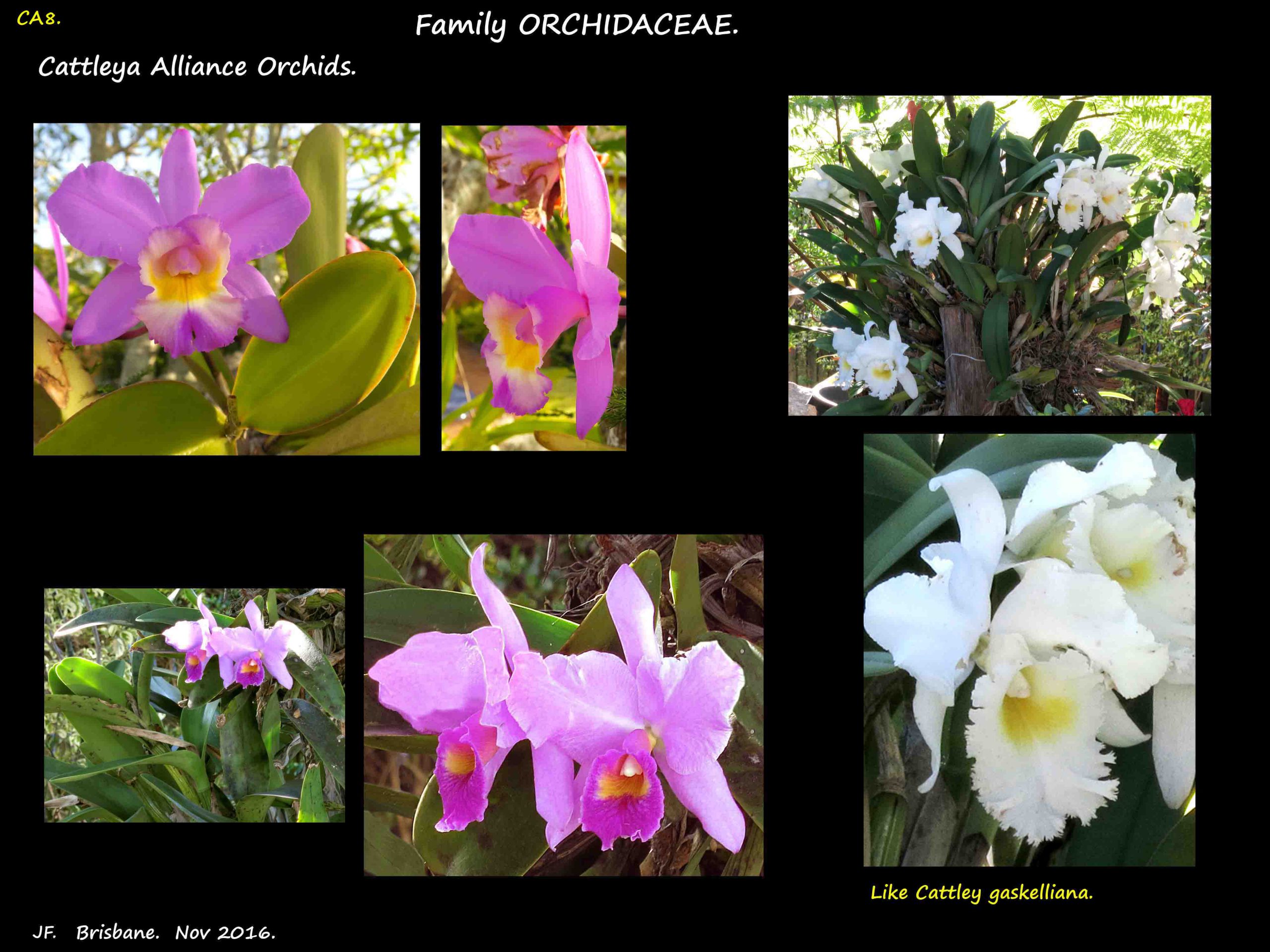Cattleya & Laelia.
1. Cattleya.
Family Orchidaceae > Subfamily Epidendroideae > Subtribe Laeliinae > Genus Cattleya.
There are over 50 species of Cattleya, some natural hybrids and thousands of cultivated hybrids.
There are so many hybrids of Cattleya labiata that, instead of correctly naming them as varieties of
C. labiata, for convenience they have been given regular botanical names with just the
Cattleya genus and a species name.
For example Cattleya labiata var. dowiana subvar. aurea is known as Cattleya trianae.
There are also thousands of intergeneric hybrids among members of the Cattleya Alliance.
Cattleya Alliance Orchids.
Subfamily Epidendroideae > Tribe Epidendreae > Subtribe Laeliinae.
The Alliance includes Cattleya, the similar Laelia, and many other genera found in the subtribe Laeliinae.
There are some natural hybrids among these but many more cultivated ones whose names are formed by
combining those of the 2 to 4 parent plants.
Parent genera include Brassavola, Broughtonia, Encyclia, Epidendrum, Rhyncholaelia and Sophronitis.
There are nearly 60 intergeneric hybrids including x Epicattleya (from Cattleya and Epidendrum),
x Laeliocattleya (Laelia and Cattleya), x Brassolaeliocattleya (Cattleya, Laelia and Brassavola) <br
and x Sophrolaeliocattleya (Sophronites, Laelia and Cattleya).
Most cattleyas seen today are hybrids with many of the better known ones being x Brassocattleya hybrids
which have full, rounded flowers with broad petals and sepals, frequently with fringed lips.
The Cattleya genus.
It is divided into Subgenera, then Sections then Series.
Most cattleyas are in the Subgenus Cattleya > Section Cattleya > Series Parviflorae.
The genus is also commonly divided into 2 groups based on the stems and leaves:
i.) the unifolate group (including C. labiata the cattleya type species) with fusiform or club-shaped pseudobulbs
carrying 1 leaf and usually with flowers having large, broad petals and sepals.
ii.) the bifoliate group with tall, cylindrical pseudobulbs, 2 leaves and typically a more, mostly smaller flowers.
General characteristics of cattleyas incude the following.
Epiphytic or terrestrial orchids.
Rhizomes with fleshy roots and club-shaped or cylindrical pseudobulbs.
Leaves, 1 or 2 (3 rarely) are generally dull green, leathery or fleshy.
Shapes can be lanceolate to oblong, ovate or elliptic and the margins are smooth.
Inflorescences, unbranched, are up to about 45 cm long with a basal sheath, and 1 or more flowers.
Resupinate flowers, up to 10 a stem are from 5 to 15 cm across, on naked stems.
They can be almost any colour except a true blue or black – white, pink, red, purple, orange, yellow or green.
Some have stripes, spots or areas of a different colour – especially the lip.
The sepals are free and usually spreading but sometimes converging.
The lateral petals are free, usually wider than the sepals and with frilled edges.
The medial petal is usually larger and 3-lobed but sometimes entire.
It is attached at the base of the column but not to it.
The sides are folded to form a tube (or partial tube) partly covering the column.
The middle lobe is wider and can be separate from, or continuous with, the side of the basal section.
The tongue-like end is wide and can be frilled or fringed.
The lip is usually a contrasting colour to the rest of the perianth and with various markings.
It has no calli (ridges) on it.
Column.
The stout, slightly arched column is fairly long, and has no wings.
The anther is at the top of the column and has 4 pollinia in 2 pairs.
The fruit is a capsule with many small seeds.
2. Laelia.
Subfamily Epidendroideae > Tribe Epidendreae > Subtribe Laeliinae.
Closely related to Cattleyas they tend to be smaller plants – some only a few centimetres high.
Some of the larger ones are very similar to cattleyas and many have been re-classified as Cattleya.
There are about 25 species and a lot of varieties including hybrids with other members of the Alliance.
Most are epiphytic but a few grow on rocks.
Most species have pseudobulbs with only 1 leathery or fleshy, ovate to oblong leaf at the top.
Inflorescences are erect or slightly arched.
The lateral petals are a similar shape to the sepals but wider.
The lip is not attached to the arched column.
There are 8 pollinia.
J.F.
